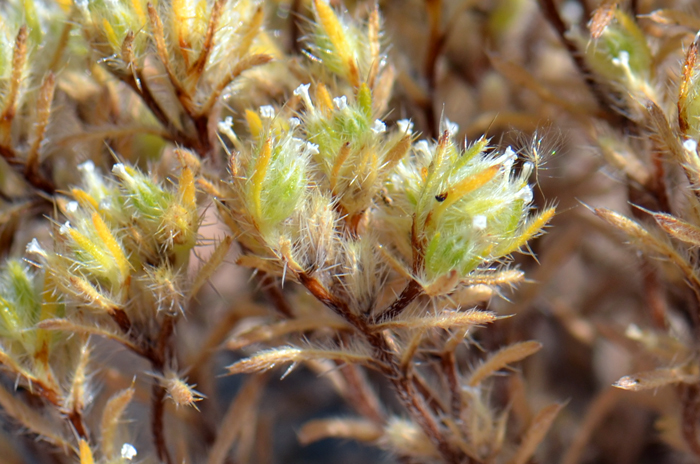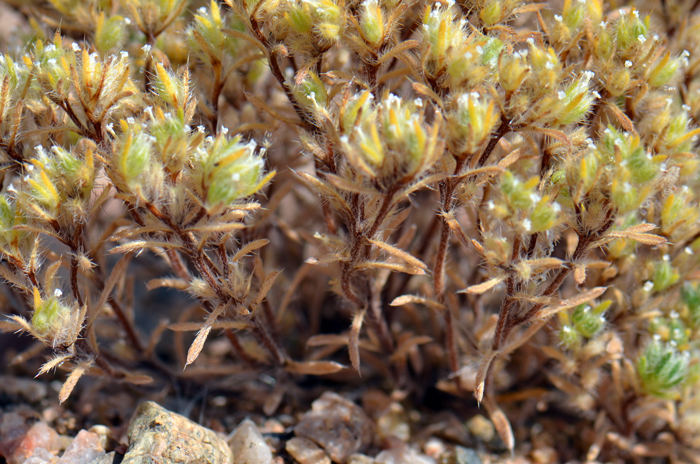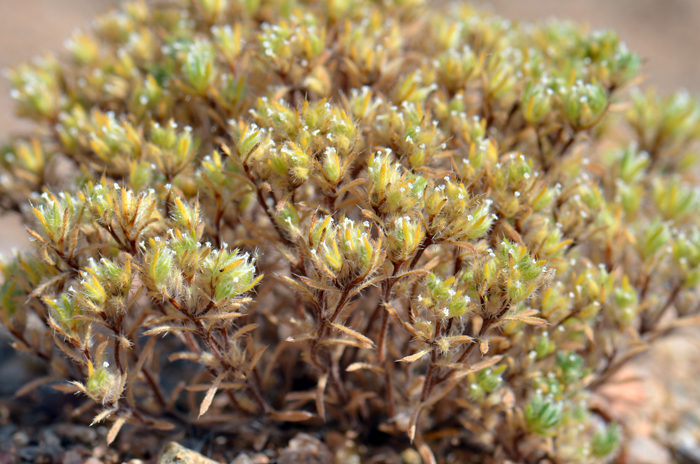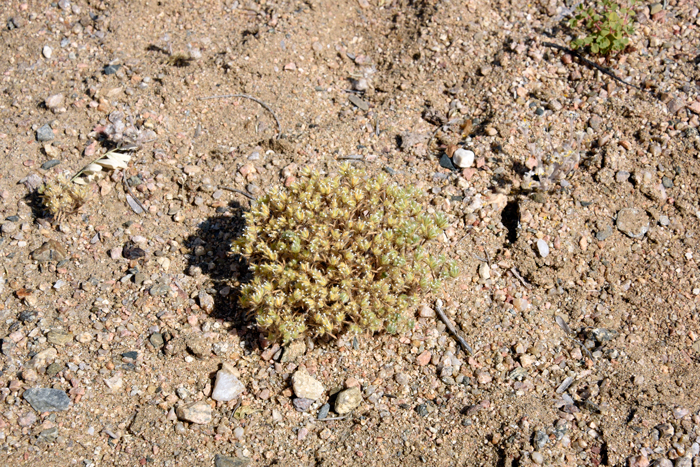Cryptantha torreyana, Torrey's Cryptantha




Scientific Name: Cryptantha torreyana
Common Name: Torrey's Cryptantha
Also Called: Torrey's Cat's-Eye, Torreys Cryptanth
Family: Boraginaceae, Forget-Me-Not Family
Synonyms: (Cryptantha affinis var. flexuosa, Cryptantha calycosa, Cryptantha eastwoodiae, Cryptantha flexulosa, Cryptantha flexuosa, Cryptantha torreyana var. calycosa, Cryptantha torreyana var. pumila)
Status: Native
Duration: Annual
Size: 4 to 16 inches tall (10-40 cm.)
Growth Form: Forb/herb; stems branched or not branched.
Leaves: Green; leaf shape linear to oblanceolate, stiff, straight hairs (strigose) or rough-hairy or bristly, a few hairs with bulbous bases.
Flower Color: White; flowers usually in 2's, congested at tips; the outer whorl of the flower (calyx) is generally constricted above; fruit is a nutlet.
Flowering Season: April or May to June and July
Elevation: 1,100 to 5,000 feet (150-1,500 m)
Habitat Preferences: Open spaces, slopes, chaparral vegetation, open coniferous forests, dry to moist soils.
Recorded Range: Torrye's Cryptantha is found primarily in western North America in CA, ID, NV, OR, UT and WA with small populations in MT, ND and WY; then northward into BC and AK.
North America & US County Distribution Map for Cryptantha torryeyana.
U.S. Weed Information: No information available.
Invasive/Noxious Weed Information: No information available.
Wetland Indicator: No information available.
Threatened/Endangered Information: No information available.
In the Southwestern United States: Arizona has 37 species of genus, California has 60 species, Nevada has 44 species, New Mexico has 23 species, Texas has 15 species, Utah has 55 species. All data approximate and subject to revision.
The genus Cryptantha was published by Johann Georg Christian Lehmann in 1837.
There is 1 variety Cryptantha torryeyana;
Cryptantha torryeyana var. pumila, Dwarf Cryptantha (CA).
Cryptantha species have typically white flowers in spikes like a scorpions (scorpioid) tail. They are often difficult to identify in the field or lab and a close examination (10x loupe or dissecting scope) of the flowers and the small seeds or nutlets is usually required.
In Southwest Desert Flora also see: Bearded Cryptantha, Cryptantha barbigera, Gander's Cryptantha, Cryptantha ganderi, Narrowstem Cryptantha, Cryptantha gracilis, Panamint Cryptantha, Johnsonella angustifolia (Cryptantha), Redroot Cryptantha, Cryptantha micrantha and Wingnut Cryptantha, Cryptantha pterocarya.
The species epithet "torreyana" is named in honor of John Torrey (1796-1873), a legendary North American botanist who described hundreds of plants collected by well known field explorers including John C. Fremont, William Emory and many others.

